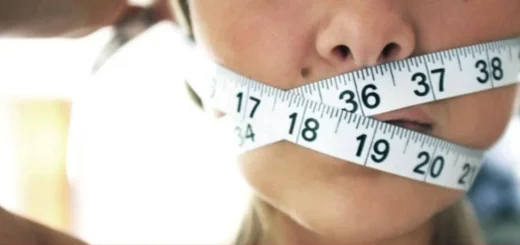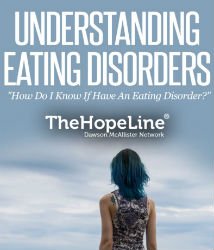Exercise, Athletes and Eating Disorders
The following information was compiled by Pauline S. Powers, M.D., University of South Florida.
The number of individuals with eating disorders who report engaging in excessive amounts of exercise to compensate for eating, is increasing. Over-exercise or obsessive exercise is not unlike purging or taking dangerous substances such as laxatives: it is a compensatory behaviour that can have devestating physical and emotional consequences.
It is widely believed that excessive exercise is just as damaging on the body and mind of an individual suffering from an eating disorder as purging after a meal.
Eating disorders and disordered eating are significant problems for many athletes. Female athletes are especially at risk in sports which emphasize a thin body or appearance, such as gymnastics, ballet, figure skating, swimming, and distance running. Male athletes are especially at risk in body building and wrestling. A greater risk is associated with sports in which anaerobic activities predominate over aerobic activities.
Gender and eating disorders among athletes
- 90-95% of eating disorders occur among women
- There is evidence, however, that male athletes are at least equally at risk as female athletes for certain types of eating pathology.
- A study of NCAA athletes found that binge eating occurred more often in male athletes than in female athletes
- More than three times as many male athletes as female athletes used saunas or steam baths to lose weight
- The same percentage of males and females used steroids to improve athletic performance
- Female athletes were four times more likely than males to use vomiting to lose weight
Causes of eating disorders among athletes
- The idealization of thinness in our society
- Judges in gymnastics and figure skating have progressively rewarded thinner athletes
- The unsubstantiated belief that lower body fat enhances performance
- Preselection Individuals who are preoccupied with weight and appearance may be more likely to participate in athletics
- Exercise studies have shown that a dramatic increase in activity can precipitate a decrease in appetite and severe weight loss
- Body dissatisfaction : Athletes at risk for eating disorders are often those who are particularly anxious and critical of their own athletic performance and who express these concerns by dissatisfaction with their bodies
Effects of eating disorders in athletes
Eating disorders may result in symptoms which interfere with athletic performance. Fatigue, Weakness, Lightheadedness, Broken bones, Leg cramps, Irregular heart rate: These are someof the many symptoms which may impair athletic capacity. These symptoms are the result of various physiological complications of eating disorders, including low thyroid hormones, poor heart and circulatory function, osteoporosis, and electrolyte imbalance.
The Female Athlete Triad
- The triad of amenorrhea, disordered eating, and osteoporosis (brittle bones) is particularly likely to occur in female athletes
- Amenorrhea or irregular menses in female athletes should be taken seriously because even brief episodes are associated with osteoporosis and infertility problems
- Multiple factors cause the amenorrhea seen in female athletes, including exercise, low weight, low fat content, stress, hormonal changes, and nutritional composition Estrogen supplementation, without weight gain, does not seem to reverse the vulnerability to osteoporosis
Detection and treatment
- Athletes are often aware of the symptoms of eating disorders, but do not want to acknowledge the symptoms for fear that they will be required to stop their sport
- Except in extreme cases, the athlete can continue the sport while in treatment
- The American College of Sports Medicine has encouraged all individuals working with physically active girls and women to be educated about the triad of amenorrhea, disordered eating, and osteoporosis, and to develop plans to prevent, recognize, treat, and reduce its risks.
- Coaches and team physicians are often in a position to identify an eating disorder early and assist the athlete in seeking appropriate treatment
Information for Fitness Instructors
Some tips for coping with a person with an Eating Disorder
- Be patient, eating disorders can be long term problems. You cannot expect overnight recovery – even when the problem is exposed.
- Encourage the person to get professional help. If the person is truly endangering his or her life e.g. their weight is getting to low, be insistent.
- Encourage the person to make an appointment with a GP. It may help to offer to take them there, or to go along with them
- Learn everything you can about eating disorders. The more you know the more you can understand. Understanding is always the key. Pass the material on to the person you are concerned about. If necessary seek professional help or support for your organisation or worker. It can be very distressing coping with a person who has an eating disorder.
- Try to ensure that you don’t allow the persons problems to interfere with your normal functioning. Let the person know that they are important. You may need to set clear boundaries.
- Include Eating Disorder information and the need for proper nutrition in your classes.










Recent Comments